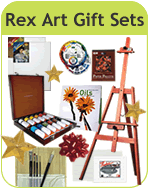Thinking Three By Don Foster
Whenever you have an opportunity, use this exercise to train your eyes and mind to evaluate an object (anything, anywhere) in much the same step-by-step way you'd have to make decisions about its portrayal on canvas.
- Is it above, below, or at your eye level?
- Is it close by, mid-distance, or far away?
- When you look at it, is it dead center, to the right, or to the left of your line of vision?
- Is it predominantly horizontal, vertical, or diagonal?
- Are there obvious surfaces that recede (turn away) from your line of vision?
- Is the object large, of medium size, or small?
- Is it squared, rounded, or triangular?
- Is it light, dark, or a middle value?
- Does it fade into nearby objects or does it seem totally disconnected?
- Does it have sharply defined edges, soft edges, or both?
- Does there appear to be space between it and other objects seen?
- Is it showing predominantly warm or cool color?
- Is its color brilliant, subdued, or dull?
- Does the dominant surface appear to be smooth, textured, or rough?
- What will be the main interest in your composition, of secondary importance, or merely serve a supportive role?
- What are you going to show, what are you going to whisper about, and what are you going to shout about?
- What are you going to use to stir curiosity and the imagination, hold interest, or lead attention back to your focal point area?
- What do you want viewers to see, first and foremost? What do you want them to think?
- What do you want them to remember?
- Green art supply product
- Drop Ship - Item is shipped from manufacturer
- Oversized - Additional shipping may apply
- Item Ships via Truck - Additional shipping will apply
*Free Shipping Offer valid for single package non-oversized shipments over $100.00 (after all applicable coupons have been applied) and under 20 lbs. within the 48 contiguous United States only. All other areas must pay shipping and handling charges. Exclusions apply. Orders for stretcher bars, cradled wood panels, stretched canvas, flammable items, closeout or discontinued merchandise cannot qualify for our free shipping promotion. We reserve the right to ship via the carrier of our choice.
Copyright © 1997 - 2023 by Rex Art Co. All rights reserved. Prices shown are in U.S. Dollars. Prices are subject to change.



